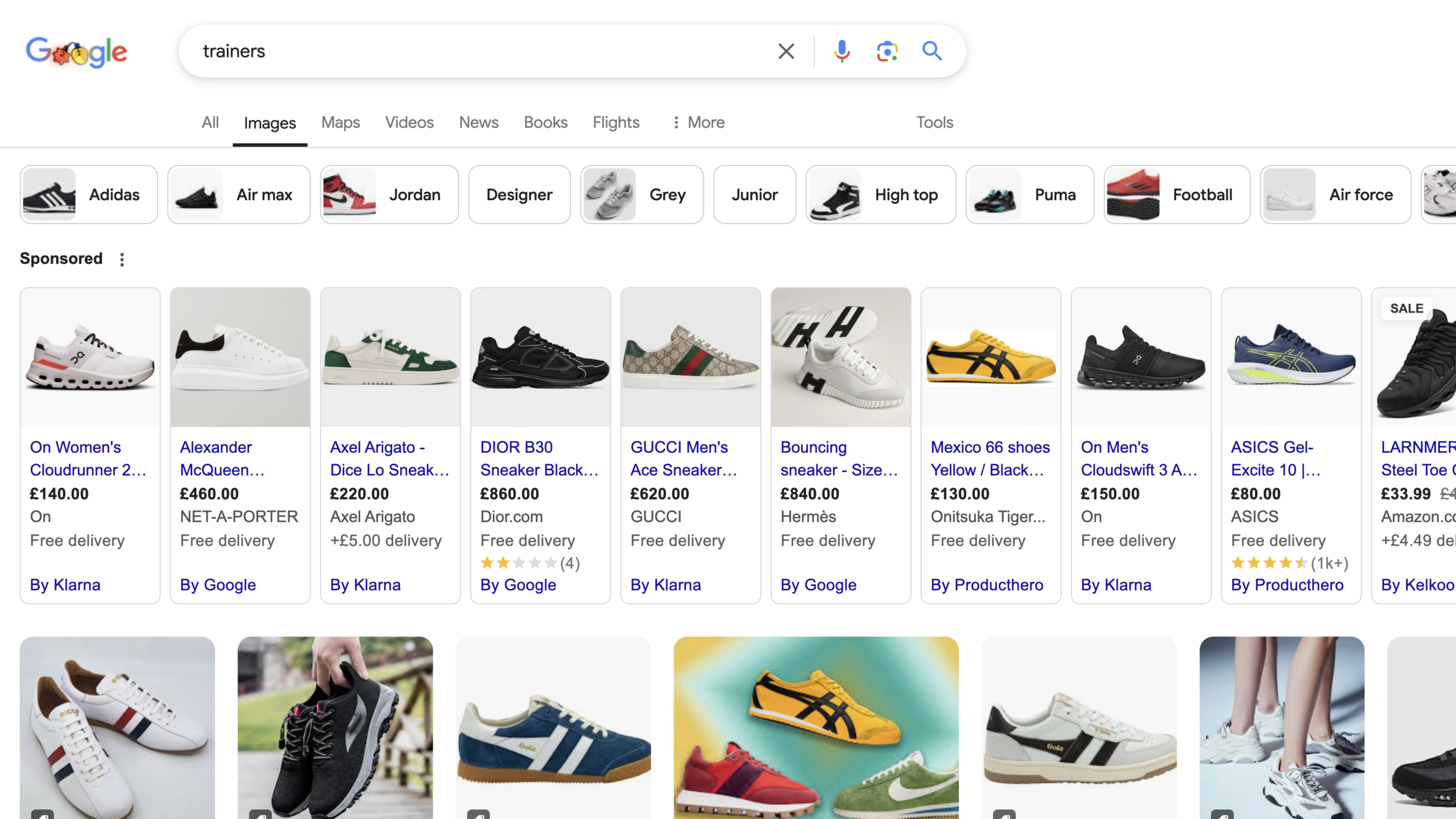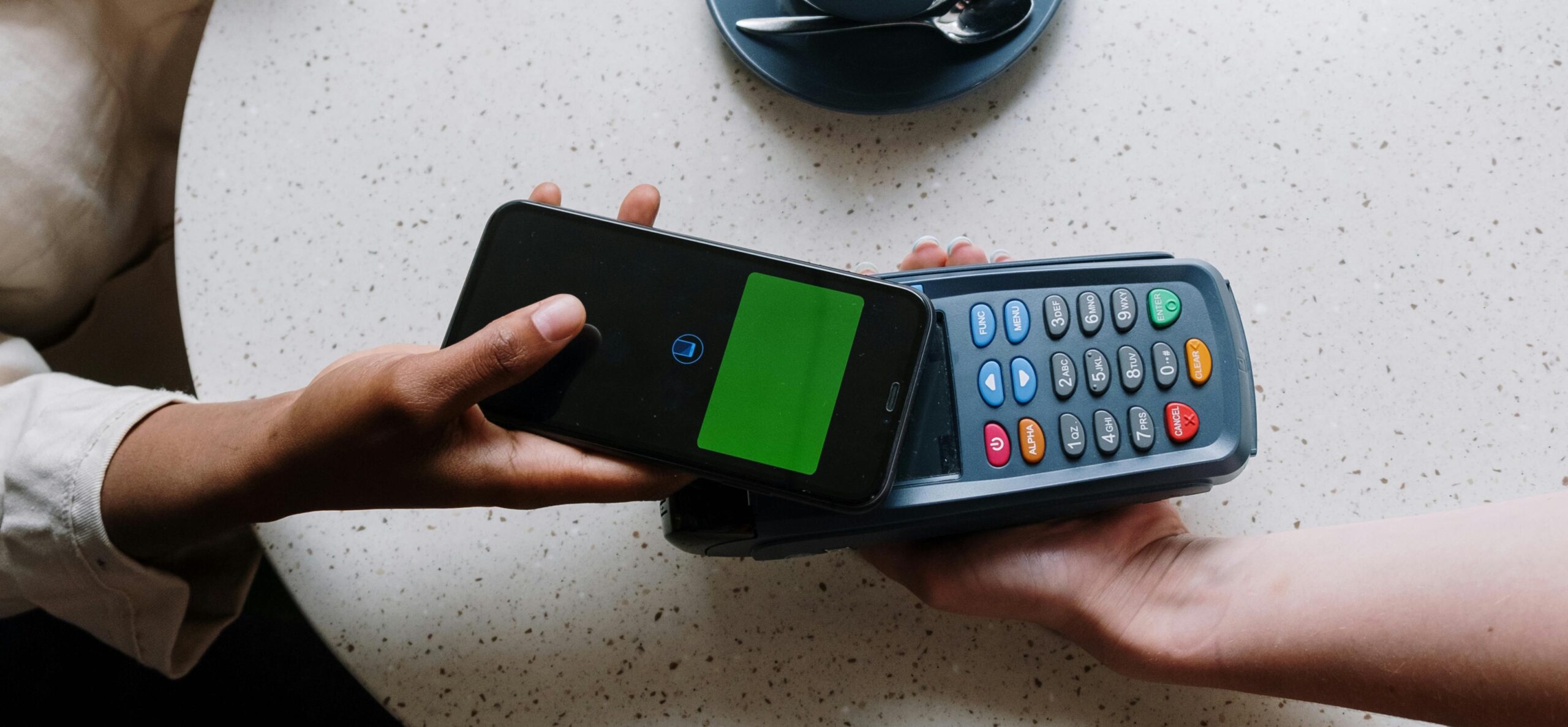This article will discuss key strategies to enhance your ecommerce email marketing efforts, including the use of automation tools, personalisation techniques, and the importance of mobile optimisation. Readers will discover how these approaches can not only improve outreach but also address common pain points like high costs and resource investment in branding services and web design services. Embrace these innovative tactics to transform your automated emails into powerful marketing tools.
Use Personalisation Techniques to Boost Email Engagement

Personalisation techniques are essential for enhancing email engagement in ecommerce. Segmenting the audience allows for tailored messaging, while dynamic content strategies ensure relevance for different customers. Crafting compelling subject lines using personal insights and creating unique promotions based on individual user behaviour are key. Leveraging customer data and employing behaviour-based triggers, together with branding services, can significantly optimise email frequency, driving results that can be analysed through tools like Google Analytics and web design services.
Segment Your Audience for Tailored Messaging
Segmenting the audience is a critical step in crafting effective email campaigns for ecommerce. By using platforms like ActiveCampaign or integrating with systems such as Magento, marketers can effectively categorise email subscribers based on their preferences and purchase behaviours. This approach allows for the creation of campaigns that resonate more deeply with each segment, leading to higher engagement rates.
For example, targeting a group of tea enthusiasts with specific promotions or content tailored to their interests can significantly enhance the relevance of the emails sent. These tailored messages may include recommendations for new tea blends, exclusive discounts on popular items, or informative content about tea brewing techniques. This precision in messaging draws readers in, boosting not only the open rates but also the click-through rates of the campaigns.
Moreover, employing plain text emails for certain segments can add a personal touch that resonates with recipients on a different level. Simple messages that focus on customer needs and highlight exclusive offers tailored to their previous actions can foster trust and loyalty. By continually refining audience segments and the relevance of messages, businesses can expect ongoing improvements in email engagement and conversion rates.
Implement Dynamic Content Strategies for Different Customers
Implementing dynamic content strategies is essential for capturing the attention of diverse customer segments in ecommerce. By tailoring email content to reflect individual preferences and behaviours, businesses can address specific demands effectively. For instance, a brand using Squarespace for its online store can customise email communications based on user interactions, providing relevant product suggestions that directly align with previous purchases or expressed interests.
This approach not only enhances customer experience but also plays a significant role in lead generation. By analysing feedback from past campaigns, marketers can fine-tune dynamic content, ensuring that each email resonates with its intended audience. This level of market segmentation allows targeted promotions and exclusive offers to reach specific groups, creating a sense of personal connection that fosters loyalty and engagement.
Moreover, utilising dynamic content enables businesses to respond quickly to changing trends and customer needs. With the ability to adjust messaging in real time, companies can seize opportunities as they arise while maintaining consistent communication with their customer base. This responsive strategy can drive higher engagement rates, ultimately contributing to improved conversion rates and sustained growth in the competitive ecommerce space.
Craft Compelling Subject Lines With Personal Insights
Crafting compelling subject lines requires a thoughtful approach, particularly in the context of email campaigns. The use of personal insights, such as previous purchase history or preferences gathered through customer relationship management, allows marketers to create subject lines that resonate. For instance, including the customer’s name or referencing items they have shown interest in can significantly increase open rates, as recipients feel the email is specifically tailored to them.
Experimenting with subject lines can lead to valuable insights on what captivates the audience. A/B testing subject lines that incorporate loyalty rewards or exclusive offers can reveal which phrases encourage more engagement. This data-driven strategy enables businesses to refine their approach, ensuring that each email newsletter captures attention and drives the desired action from subscribers.
Moreover, a personal touch in subject lines not only enhances the likelihood of opening an email but also strengthens the connection between the brand and its customers. By aligning subject lines with the interests and behaviours of recipients, businesses can foster a sense of community. This strategy ultimately contributes to building long-term loyalty as customers feel understood and valued through personalised communication in email campaigns.
Create Unique Promotions for Individual User Behaviour
Creating unique promotions based on individual user behaviour can significantly enhance customer engagement in ecommerce. For instance, an online retailer specialising in sunglasses can analyse customer data such as past purchases and browsing habits. By offering personalised discounts on specific styles, such as offering a 20% incentive on retro sunglasses for customers who previously viewed similar products, businesses can effectively motivate purchases.
Incorporating gamification elements into promotions also presents a valuable approach to attracting customer attention. For example, a company could create a campaign where customers earn points for engaging with emails or completing certain actions, such as sharing their favourite sunglasses on social media. This method not only drives engagement but also encourages behaviour that aligns with their marketing goals while keeping the recipients interested in upcoming promotions.
Ultimately, the message delivered through these unique promotions must resonate with the recipient’s interests to foster loyalty. Tools that track user interactions help optimise these promotional efforts, allowing businesses to tweak offers and retain customer interest. By personalising promotions around user behaviour, ecommerce businesses turn casual visitors into loyal customers, paving the way for long-term growth and sustainable success.
Leverage Customer Data to Enhance Relevance
Leveraging customer data is vital for enhancing the relevance of email marketing campaigns. By utilising powerful tools, brands can gather insights on consumer behaviour and preferences. For instance, ecommerce businesses can track purchases, browsing history, and engagement rates to tailor their communications effectively and boost brand awareness among their target audience.
Implementing email marketing automation, especially with drag-and-drop functionalities, simplifies the process of creating personalised email content. This approach allows marketers to easily design and deploy campaigns that cater to different segments of customers, ensuring messages resonate with individual needs. When businesses send customised content based on customer interactions, it fosters a stronger connection and drives higher engagement.
Personalised promotions also greatly benefit from insights gained through customer data analysis. For example, a pet supply retailer can offer specific discounts on items aligned with a customer’s previous purchases, enhancing the likelihood of repeat transactions. By continually refining these targeted promotions, companies can keep their audience engaged, effectively turning casual shoppers into loyal customers through relevant and appealing marketing strategies.
Employ Behaviour-Based Triggers for Timely Emails
Employing behaviour-based triggers is pivotal in creating timely emails that resonate with ecommerce customers. By utilising tools like WooCommerce, businesses can automate messages that cater to customer actions, such as cart abandonment or product views. For instance, sending an email offering early access to new collections can prompt customers to return and complete their purchases, driving engagement effectively.
Predictive analytics plays a crucial role in understanding customer behaviour for these timely emails. By analysing past interactions, marketers can anticipate the needs of their audience. A brand like Outdoor Voices could benefit from this by reaching out to customers who frequently browse activewear but haven’t made a purchase, providing tailored promotions that encourage immediate action.
Building a robust mailing list facilitates the use of behaviour-based triggers, allowing businesses to personalise communications further. For example, if a customer browses hiking gear, a strategic follow-up email featuring special offers on related items can motivate purchases. This approach not only fosters loyalty but also ensures that customers feel valued through relevant and timely interactions.
Incorporate Storytelling in Email Campaigns

Incorporating storytelling in email campaigns enhances customer connection and engagement. This section will cover how to develop relatable characters to engage readers, weave compelling narratives for product promotions, and use visual elements effectively. Furthermore, it will explore creating series emails for extended engagement, highlighting customer journeys as success stories, and crafting emotionally resonant messages that inspire action, all of which are vital components of a successful email marketing strategy.
Develop Relatable Characters to Connect With Readers
Creating relatable characters in email campaigns can significantly enhance engagement, as they enable readers to connect emotionally with the messages being conveyed. By incorporating characters that reflect the target audience’s aspirations, fears, and experiences, ecommerce brands can foster a relatable narrative that encourages recipients to interact with the content. This approach not only drives engagement but also helps to establish a consistent revenue stream through loyal customer bases feeling more inclined to support the brand.
For instance, a print on demand business could develop a character who navigates the challenges of starting an online store, sharing her journey of using a website builder to create her own brand. These stories can showcase the empowerments and hurdles in ecommerce, offering valuable insights while establishing a sense of credibility. By highlighting relatable experiences, readers may see themselves in the character’s journey, motivating them to explore services and products that assist in achieving similar goals.
Furthermore, characters can embody different customer profiles, allowing for targeted messaging that speaks directly to each segment’s needs. For example, a series of emails might follow a character who struggles with choosing the right design for her merchandise, illustrating the decision-making process while subtly introducing the brand’s offerings. This personalised approach not only enhances the storytelling element but also positions the brand as a creditable resource for customers aiming to realise their ecommerce ventures with confidence.
Weave Compelling Narratives for Product Promotions
Weaving compelling narratives for product promotions allows ecommerce businesses to create a deeper connection with their audience. By highlighting real-life scenarios that resonate with both genders, brands can craft stories that speak directly to the customers’ needs and desires. Leveraging automation tools and APIs enables marketers to deliver targeted narratives efficiently, ensuring each story aligns with the specific preferences of diverse customer segments.
For instance, an online clothing retailer can narrate the journey of a customer experiencing confidence through a new outfit. This narrative approach not only highlights the product’s features but also personalises the shopping experience, prompting engagement as recipients see themselves in the story. Incorporating email automation allows businesses to follow up with related product promotions that continue the narrative, reinforcing the message and encouraging conversions.
Furthermore, using analytics to monitor customer interactions with these narratives provides insights into what drives engagement. Marketers can refine their storytelling strategies by adjusting narratives based on feedback and data collected through automation, ensuring that future emails resonate even more. Ultimately, a well-crafted story can not only enhance brand loyalty but also prompt immediate action from readers, turning potential buyers into dedicated customers.
Use Visual Elements to Support Your Story
Incorporating visual elements into email campaigns is essential for enhancing storytelling and engaging the audience effectively. High-quality images or graphics can bring beauty to the message, capturing the reader’s attention and providing a deeper emotional connection. For instance, a beauty brand can use striking visuals of its products in use, demonstrating the transformative effects that can inspire customers to take action and make a purchase.
Visual storytelling can also include infographics that present information related to promotions or sales events in a concise manner. By using visuals to break down complex data, brands can help customers understand the benefits of a specific product or highlight the advantages of their business model. These elements not only make the content more appealing but also ensure that key messages resonate, increasing the likelihood of interaction.
Moreover, integrating calls to action within visual elements can guide customers toward specific actions, such as completing a purchase using a payment processor. For example, placing a prominent button within an engaging image can motivate customers to click and explore related offerings. By combining visual appeal with strategic messaging, businesses can effectively address customer needs, building gratitude and loyalty through enhanced experiences that drive conversions.
Create Series Emails for Extended Engagement
Creating series emails is a powerful strategy for fostering extended engagement and driving revenue in ecommerce email campaigns. By developing a narrative that unfolds over multiple messages, brands can keep consumers interested and eager for the next installment. For instance, a fashion retailer may initiate a story about a customer’s journey to building a stylish wardrobe, promoting products throughout the series while ensuring that data security remains a priority to protect consumer information.
The advantage of series emails lies in their ability to provide consistent communication that captures the audience’s attention. By integrating relevant images and engaging content within each email, businesses can visually enhance their messaging while maintaining a cohesive theme. This approach helps in building anticipation and encouraging recipients to interact with the brand over time, rather than viewing email messages as isolated communications.
Moreover, series emails can effectively address consumer pain points by providing solutions and insights in a structured manner. Each email can offer actionable tips or advice, culminating in a compelling call to action that leads to a specific goal, such as completing a purchase or exploring a new product line. By creating a comprehensive narrative, brands not only boost engagement rates but also cultivate loyal relationships with their audience, ultimately enhancing overall marketing effectiveness.
Highlight Customer Journeys as Success Stories
Highlighting customer journeys as success stories serves as a powerful marketing channel, effectively showcasing how products have positively impacted consumers. By sharing authentic testimonials, businesses can create relatable narratives that resonate with potential customers. This approach not only instils trust in the brand but also encourages others to picture themselves achieving similar success.
Including clear calls to action, such as a button that leads to featured customer success stories, promotes further engagement. This strategic placement within email campaigns can drive traffic to specific product pages while helping to manage inventory by showcasing popular items. Such direct connections between testimonials and product offerings illustrate their real-world application, prompting customers to make informed decisions about purchases.
Moreover, focusing on effective budgeting for marketing strategies allows businesses to allocate resources towards creating compelling customer narratives. By developing stories that highlight genuine experiences, brands can enhance their email marketing efforts, ultimately increasing conversion rates. This commitment to transparency empowers customers to feel confident in their choices, fostering a sense of community and loyalty around the brand.
Craft Emotionally Resonant Messages to Inspire Action
Crafting emotionally resonant messages in email campaigns requires a deep understanding of the audience’s needs and preferences. For instance, brands like Dollar Shave Club effectively invoke feelings of loyalty by showcasing how their products simplify daily routines, aligning their messaging with consumer habits. This approach not only attracts attention but also encourages action, driving engagement and purchases through relatable storytelling that emphasises convenience and value.
Retail brands can also leverage emotional appeal by highlighting their commitment to customer satisfaction and tailored experiences. Warby Parker, known for its try-before-you-buy policy, connects with customers by sharing stories about individuals finding the perfect pair of glasses. By sharing authentic testimonials, they foster trust and inspire action, guiding potential buyers toward making informed decisions about their products.
Additionally, integrating emotional narratives into loyalty programs can enhance customer connections. When ecommerce businesses frame their loyalty initiatives around personal stories or milestones, they create a sense of belonging and appreciation among customers. By illustrating how loyalty rewards translate into meaningful experiences, companies can motivate recipients to engage eagerly with their offerings, further solidifying long-term relationships and driving repeat business.
Utilise Automation Tools for Streamlined Campaigns

Automating email marketing campaigns is essential for ecommerce brands looking to enhance their engagement strategies. This includes setting up welcome sequences for new subscribers, implementing abandoned cart emails to recover potential sales, and scheduling regular newsletters to maintain consistent communication. Further, leveraging analytics can optimise automated workflows, while personalising responses based on user actions will increase customer satisfaction. Monitoring key metrics will also ensure that automation strategies remain effective and aligned with the subscription business model.
Set Up Welcome Sequences for New Subscribers
Setting up welcome sequences for new subscribers is a critical component of any effective email marketing service in ecommerce. A seamless welcome email can create a positive first impression, encouraging potential customers to engage further with the company. When done correctly, this initial communication can significantly increase the likelihood of conversions by making the new subscribers feel valued from the outset.
Research indicates that welcome emails can generate up to 50% more engagement than standard campaigns, making them an essential strategy for reaching a target audience. These emails should outline what subscribers can expect, such as exclusive deals, content tailored to their interests, and valuable insights into the brand’s offerings. By capturing interest early, companies can nurture relationships and encourage exploration of their products or services.
Additionally, incorporating personalised elements like the subscriber’s name and preferences can further enhance the effectiveness of these welcome sequences. By leveraging data on user behaviour, businesses can craft content that resonates, creating a deeper connection with the audience. Effective welcome sequences not only improve overall email marketing metrics but also lay the groundwork for long-lasting customer relationships in the competitive landscape of the internet.
Implement Abandoned Cart Emails to Recover Sales
Implementing abandoned cart emails is an effective strategy to recover potential sales in ecommerce. By automatically sending reminders to customers who have left items in their shopping cart, brands can significantly boost their income. This tactic not only recaptures lost revenue but also reinforces brand presence in the minds of consumers who may have needed a nudge to complete their purchases.
Including elements of social proof, such as testimonials or reviews, in abandoned cart emails can enhance their effectiveness. When potential buyers see that others have had positive experiences with the products left in their cart, it encourages them to finalise their purchase. Furthermore, using marketing techniques that highlight limited-time offers or discounts can create urgency, motivating customers to act quickly and improve sales forecasting for future campaigns.
To maximise the impact of these emails, personalisation plays a key role. Tailoring content based on user behaviour, such as the specific items abandoned, can lead to higher conversion rates. By analysing data on customer interactions, ecommerce businesses can refine their strategies, ensuring that abandoned cart emails resonate with their target audience and ultimately enhance their overall marketing effectiveness.
Schedule Regular Newsletters for Consistent Communication
Scheduling regular newsletters is a vital component of email marketing strategies in ecommerce, as it establishes a consistent line of communication with customers. By communicating regularly, brands can enhance customer retention and keep their audience informed about new products, promotions, and significant updates. This ongoing engagement builds confidence in the brand, fostering a loyal customer base who appreciates the regular touchpoints.
Using automation tools to schedule newsletters allows businesses to optimise their marketing efforts efficiently. For example, a retailer might choose to send special anniversary newsletters that celebrate milestones with customers, offering exclusive discounts or gifts as a token of appreciation. This approach not only acknowledges customer loyalty but also encourages recipients to make a purchase, strengthening their connection with the brand.
In addition to promotional content, incorporating valuable insights or educational material in newsletters keeps customers engaged and interested. Brands can utilise gifs or other interactive elements to make their newsletters visually appealing and more entertaining. This strategy helps maintain audience interest while providing them with useful information, ultimately supporting long-term loyalty and enhancing the overall effectiveness of the marketing strategy.
Use Analytics to Optimise Automated Workflows
Using analytics to optimise automated workflows is essential for ecommerce brands seeking to enhance their email marketing strategies. By tracking key performance indicators (KPIs), such as open rates and conversion rates, businesses can gain valuable insights into customer behaviour. For example, a fashion retailer can analyse which campaigns generate the most engagement, allowing them to tailor future content and increase the effectiveness of their email marketing efforts.
Additionally, analytics can inform decisions related to audience segmentation and content personalisation. By understanding the preferences and purchasing habits of different consumer segments, brands can dispatch targeted emails that align with individual interests, such as specific meal plans or fashion styles. This strategic use of information not only boosts engagement but also strengthens customer loyalty, as recipients see relevant offers that meet their specific needs.
Furthermore, integrating SMS notifications with email campaigns can amplify outreach while maintaining a cohesive strategy. Both channels, when guided by informative analytics, allow brands to reach customers at the right moment with timely promotions or updates. Implementing effective search engine optimization tactics alongside automated workflows ensures that marketing efforts are not only current but also discoverable, driving traffic and conversions through targeted content delivery.
Personalise Automated Responses Based on User Actions
Personalising automated responses based on user actions can significantly enhance the effectiveness of ecommerce email marketing. When a customer interacts with a brand’s customer portal, for instance, immediate automated emails that reflect their specific activities can capture their attention more effectively. This approach ensures that each interaction feels meaningful and relevant, addressing customer needs in real-time.
Utilising insights from customer behaviour allows businesses to craft tailored messages that encourage further engagement. For example, if a user browses holiday promotions on an ecommerce website but does not complete a purchase, sending a targeted email offering additional information on those items or exclusive discounts can prompt them to reconsider. This strategy not only reciprocates the customer’s interest but also fosters a sense of value from the brand.
Furthermore, implementing a system that triggers personalised responses based on specific actions can streamline the customer experience. If a customer watches content on platforms like Hulu, subsequent email reminders or recommendations that tie back to their interests can solidify loyalty. By strategically engaging users with personalised content in ecommerce email marketing, businesses are better positioned to satisfy customer expectations and drive conversions.
Monitor Key Metrics to Enhance Automation Strategies
Monitoring key metrics is fundamental for enhancing automation strategies in email marketing, especially in the context of ecommerce. Focused analysis of open rates provides valuable insights into customer engagement, allowing marketers to adapt their approach for optimal performance. For example, an online retailer can track the open rates of birthday promotional emails to tailor future communications specifically for those celebratory moments, driving higher engagement and customer satisfaction.
Understanding how different metrics interact can also enhance campaign strategies beyond basic engagement. By observing the correlation between open rates and customer behaviours, such as payment completion rates, businesses can identify patterns that inform their marketing initiatives. For instance, if a significant number of recipients open an email but fail to complete a purchase, a follow-up message offering a special incentive, like a discount on a loot crate for first-time buyers, may effectively encourage conversions.
Additionally, tracking the performance of automated campaigns allows brands to experiment with various content formats and delivery times. This approach helps in determining the most effective strategies for engaging a diverse customer base, including those making frequent purchases or occasional online shopping visits. By continuously adapting to the data insights, businesses can refine their email marketing to ensure that customers consistently receive relevant and timely communications, ultimately fostering loyalty and enhancing sales outcomes.
Experiment With Interactive Email Elements
Interactive email elements can drive customer engagement and enhance ecommerce marketing strategies. Incorporating polls and surveys provides immediate feedback, while quizzes can further captivate users. Utilising GIFs and videos creates a dynamic content experience, and countdown timers generate urgency for limited-time offers. Showcasing products with interactive carousels visually engages recipients, allowing businesses to test various features to assess performance effectively.
These techniques offer marketers practical avenues to boost engagement, improve profit margins, and ensure compliance with regulations such as the General Data Protection Regulation (GDPR). Each method contributes to a more compelling email marketing strategy, making it essential to adapt and refine these tools for maximum impact.
Add Polls and Surveys for Immediate Feedback
Integrating polls and surveys into email marketing campaigns provides a straightforward way to gather immediate feedback from customers. This feedback can help brands identify areas for improvement, directly addressing issues that may lead to customer attrition. By understanding customer preferences regarding personal care products, businesses can align their offerings more closely with consumer desires, enhancing satisfaction and retention.
Effective use of polls in emails can significantly increase engagement levels, especially when paired with a strong call to action. For instance, a brand could ask customers if they prefer a particular scent in their skincare products, encouraging responses while guiding them towards the point of sale. By offering a small incentive, like a discount for completing a survey, brands can further motivate users to engage, creating a win-win situation for both parties.
Surveys can also serve as an educational tool, helping businesses understand customer behaviour related to payment methods, such as credit card usage. Brands can inquire about customer satisfaction with the checkout process or the payment options available, allowing them to optimise user experience at critical points. This proactive approach not only strengthens the relationship with customers but also fosters loyalty, making customers feel valued and heard.
Incorporate Quizzes to Boost Customer Engagement
Incorporating quizzes into email marketing campaigns offers a unique way to boost customer engagement while simultaneously enhancing the user experience. Quizzes can be tailored to specific products or services, inviting recipients to discover the best options for their needs, which can lead to higher satisfaction and ultimately influence purchase decisions. Not only do these interactive elements capture attention, but they also lower the bounce rate as users remain engaged with the content, eager to see their results.
Furthermore, quizzes can help businesses gather valuable data regarding customer preferences and behaviours. By asking specific questions about pricing or favourite products, marketers can gain insights that inform future strategies and product offers. This data-driven approach not only aids in recognising trends but also ensures the selection of payment gateway options aligns with consumer expectations, making the purchasing process smoother and more attractive to potential buyers.
Engaging potential customers with quizzes can also motivate them to reconsider past decisions related to products or prices. For instance, offering a quiz that highlights current promotions or discounts encourages users to reassess previously abandoned carts while feeling valued for their input. By creating a sense of investment in the brand, businesses can effectively enhance the overall shopping experience, encouraging conversions and cultivating long-term loyalty among customers.
Use GIFs and Videos for Dynamic Content Experience
Utilising GIFs and videos in email marketing campaigns can significantly enhance customer engagement, making messages more visually appealing and memorable. For instance, a subscription box service can create short videos that demonstrate the value proposition of its offerings, showcasing the excitement of unboxing a new package. This dynamic content not only captures attention but also encourages recipients to make a purchase, ultimately leading to higher profit margins.
Incorporating these multimedia elements allows ecommerce brands to effectively convey their messages without overwhelming the reader with text. By showcasing features or benefits through engaging GIFs, companies can illustrate how their products solve customer pain points, promoting a clearer understanding of their value. This strategy resonates particularly well in the competitive landscape of mobile apps and app stores, where standing out is crucial for success.
Moreover, the use of interactive videos can foster deeper connections with potential customers by encouraging them to take specific actions, such as exploring product lines or signing up for promotional offers. By integrating calls to action within video content, ecommerce businesses can effectively channel interest into sales opportunities, enhancing their overall email marketing campaigns and driving sustained engagement.
Design Countdown Timers for Limited-Time Offers
Designing countdown timers for limited-time offers is an effective component of a digital marketing strategy that can significantly enhance customer engagement. By creating urgency, these timers encourage recipients to act quickly, driving conversions for ecommerce brands. For instance, a meal kit delivery service can use a countdown timer in their emails to promote special deals, motivating subscribers to complete their purchase before the offer expires.
To implement countdown timers effectively, brands can leverage email marketing software that allows for seamless integration of dynamic content. This technology ensures that timers accurately reflect the real-time countdown, enhancing the customer experience by providing clarity on the time left for promotions. Additionally, visually appealing timers can attract attention and increase the likelihood of customer interaction, proving particularly beneficial for businesses looking to generate more cash through limited-time discounts.
Incorporating countdown timers also allows businesses to tailor their messaging to specific customer segments, promoting products that resonate with their interests. This personalisation not only reinforces the urgency of the offer but also connects with customers on a deeper level, resulting in increased trust and loyalty. As customers appreciate timely promotions that align with their preferences, the implementation of countdown timers can lead to substantial growth in conversion rates for ecommerce brands.
Create Interactive Product Carousels to Showcase Items
Creating interactive product carousels in automated emails can significantly enhance the shopping experience for customers. Ecommerce platforms like BigCommerce allow retailers to showcase multiple items within a single email, effectively increasing user engagement by letting recipients navigate through various products without leaving their inbox. This approach captures attention and encourages recipients to explore the full range of offerings available, potentially leading to higher click-through and conversion rates.
These carousels not only make it easier for customers to view products they may be interested in but also provide a seamless way to move items to their cart with just a few clicks. For example, if a consumer receives an email featuring a carousel of new arrivals, they can easily select their favourites and add them directly to their cart. This streamlined process minimises cart abandonment, as customers can complete purchases quickly, ultimately increasing sales and decreasing tax implications for the retailer.
Incorporating product carousels in email campaigns can also help businesses gain valuable insights into consumer preferences. By tracking engagement metrics, brands can determine which products drive the most interest and tailor future marketing strategies accordingly. This data-driven approach enables ecommerce businesses to refine their offerings effectively, ensuring they meet customer needs and create a more compelling shopping experience overall.
Test Various Interactive Features to Gauge Performance
Testing various interactive features in email marketing allows businesses to assess their effectiveness in engaging customers and reducing customer acquisition costs. By experimenting with elements such as quizzes, polls, and interactive product displays, marketers can gain valuable insights into what resonates with their audience. For example, utilising marketing software that tracks user interactions can guide brands in refining their strategies to maximise engagement and ultimately enhance conversion rates.
Incorporating urgency through elements like countdown timers can tap into the fear of missing out, prompting immediate responses from subscribers. This approach not only encourages quick purchases but also fosters a sense of urgency that minimizes churn rate among potential customers. By evaluating the impact of these features on engagement, companies can determine whether these strategies effectively contribute to their overall marketing objectives.
Moreover, integrating interactive elements that encourage sharing on social media can expand reach and foster brand loyalty. By assessing how these features perform, brands can adjust their tactics to ensure they are meeting the needs of their audience. This data-driven approach allows businesses to continually improve their email campaigns, creating a more engaging and effective marketing strategy that drives sustainable growth.
Focus on Mobile Optimisation for Max Reach

Focus on Mobile Optimisation for Max Reach
Mobile optimisation is crucial for maximising reach in ecommerce email marketing. Ensuring responsive design creates mobile-friendly emails, while simplifying content enhances readability on smaller screens. Optimising load times enriches user experience, and employing mobile-specific calls-to-action drives engagement. Testing email appearances on various devices and analysing mobile engagement metrics are essential steps to refine workflows and improve return on investment, particularly when using platforms like Mailchimp.
Ensure Responsive Design for Mobile-Friendly Emails
Ensuring responsive design for mobile-friendly emails is critical for brands aiming to improve customer engagement, especially in the competitive ecommerce landscape. With a significant number of consumers checking emails on mobile devices, optimising email layouts allows footwear retailers to capture attention effectively. A responsive design facilitates seamless viewing, enabling users to read embedded content without zooming, thus enhancing the overall experience.
Incorporating mobile-responsive elements helps businesses drive traffic to specific landing pages linked to prominent sales events like Cyber Monday. By designing emails that automatically adjust to various screen sizes, marketers can maximise visibility for promotions, ensuring that critical information is easily accessible. This adaptability not only aligns with preferences determined by algorithms but also aids in converting mobile viewers into active customers.
Taking the time to test different layouts and visuals for mobile devices ensures that brands deliver emails that resonate with their audience. By prioritising mobile optimisation, ecommerce businesses can effectively address potential pain points related to email engagement, ultimately resulting in higher conversion rates. For instance, prominently displaying user-friendly call-to-action buttons within these emails can significantly encourage recipients to explore offers or make purchases directly from their devices.
Simplify Content for Smaller Screens
Simplifying content for smaller screens is crucial in ecommerce email marketing to maintain customer engagement and drive conversion rates. Utilising an appropriate font size enhances readability, ensuring that recipients can easily scan through essential information without frustration. Brands should focus on concise messaging that highlights key points, such as the company’s logo, promotional offers, and pricing strategies, making it visually appealing and straightforward for mobile users.
Designing emails with a clean layout allows important elements, like calls-to-action, to stand out. By prioritising essential information at the top of the email, businesses can guide customers quickly to relevant content and offers, increasing the likelihood of interaction. For instance, an online retailer could feature a distinct logo alongside a bold pricing strategy, attracting attention immediately and fostering recognition while encouraging immediate responses.
Additionally, brands can optimise images to suit smaller screens, ensuring they load quickly and maintain clarity. This can significantly impact user experience, leading to higher engagement rates as customers easily navigate emails on their devices. Using platforms like HubSpot can streamline this process, allowing marketers to test mobile-friendly designs that resonate effectively with their audience while ensuring all visual elements contribute to a cohesive and appealing email experience.
Optimise Load Times for Enhanced User Experience
Optimising load times is a critical factor in enhancing the customer experience for ecommerce email marketing. Research shows that slow loading emails can lead to decreased customer satisfaction as users may abandon messages if they do not load quickly. For businesses using platforms like Klaviyo and Shopify, minimising load times can increase the likelihood of engaging customers, ultimately improving conversion rates and supporting upselling efforts.
Moreover, ensuring that emails load swiftly can positively impact overall user engagement. When emails display properly without delays, customers are more likely to interact with embedded links and promotional boxes, which can lead to direct purchases. By prioritising images and content that load quickly, brands can maintain customer interest and drive consistent traffic to their online stores.
Incorporating best practices for load time optimisation can further enhance email effectiveness in the competitive ecommerce landscape. By using compressed images and streamlined coding techniques, marketers can create a smooth experience for recipients. This attention to detail not only promotes upselling opportunities but also builds trust, as satisfied customers are more likely to return to the brand for future purchases.
Use Mobile-Specific Calls-to-Action to Drive Clicks
Using mobile-specific calls-to-action (CTAs) in marketing emails enhances engagement by driving clicks and conversions. As more customers access their inbox on mobile devices, it is vital for ecommerce brands to design CTAs that are easy to tap and understand. A well-placed, prominent button that encourages actions like “Shop Now” or “Grab Your Discount” can significantly improve user interaction, making the email experience seamless and efficient.
Investment in optimising CTAs for mobile use not only caters to user preferences but also supports an effective marketing ecosystem. By ensuring that CTAs are visually distinct and appropriately sized, brands can create intuitive pathways for customers to follow, streamlining the purchasing process. This focus on user-friendly design reflects an understanding of customer service, ultimately enhancing customer satisfaction and loyalty.
Incorporating analytics to track the performance of mobile-specific CTAs provides valuable insights into customer behaviour. By analysing which CTAs yield the highest engagement rates, brands can refine their marketing emails further to meet the evolving needs of their audience. This strategy not only maximises overall campaign effectiveness but also establishes a solid foundation for continuous improvement in email marketing tactics.
Test Email Appearance on Multiple Devices
Testing email appearance on various devices is an essential step in the emailing ecommerce strategy to ensure effective customer engagement. With a significant proportion of consumers accessing emails via smartphones and tablets, brands must verify that their emails display correctly across different screen sizes. Companies like HelloFresh exemplify this practice by regularly assessing their email layouts, ensuring they look appealing on mobile devices, which ultimately enhances direct marketing effectiveness.
Utilising marketing automation tools can streamline the process of testing email formats on multiple platforms. By conducting these tests, brands can identify potential issues, such as poorly aligned images or incorrectly formatted text, before sending campaigns to customers. This attention to detail not only boosts customer satisfaction but also creates a positive brand experience that encourages loyalty and repeat purchases.
Furthermore, capturing insights from these tests allows businesses to refine their email content continuously. Understanding how different devices affect user behaviour enables marketers to tailor their strategies effectively to meet customer expectations. By prioritising this aspect of email marketing, ecommerce brands can drive higher engagement rates and realise improved conversion outcomes through well-optimised email campaigns.
Analyse Mobile Engagement Metrics for Insights
Analysing mobile engagement metrics is essential for ecommerce brands looking to refine their email marketing strategies. By using tools integrated with platforms like Shopify email apps or Klaviyo, businesses can monitor user interactions, such as open rates and click-through rates on mobile devices. Research shows that understanding these metrics allows companies to tailor their content more effectively, ensuring it resonates with mobile users.
Insightful data streams from mobile engagement can inform businesses about customer preferences and behaviours, enabling them to adjust their tactics accordingly. For instance, analysing which types of content generate higher engagement can help refine future campaigns, directly impacting conversion rates. Brands should leverage this insight to streamline their communication and better connect with their target audience through personalised messaging and offers.
In addition to refining content, businesses should consider how to manage their database effectively with the data obtained from mobile engagement metrics. By identifying trends that emerge from mobile interactions, ecommerce retailers can adapt their strategies to enhance user experience. This proactive approach fosters customer loyalty and improves retention, ultimately leading to increased sales and success in the competitive ecommerce landscape.
Implement a/B Testing for Continuous Improvement

Implementing A/B testing is crucial for innovative email marketing strategies in ecommerce. This process involves identifying key elements to test, such as subject lines or calls-to-action, and creating two variations of emails for comparison. By monitoring analytics and metrics, businesses can determine the winning styles, allowing for adjustments that enhance engagement from most valuable customers. Regular testing keeps content fresh, while feedback fosters data-driven decisions related to promotions, such as gifts or donation campaigns.
Identify Key Elements to Test for Maximum Impact
Identifying key elements to test in an advertising campaign is essential for maximising the impact of email marketing efforts. Businesses should consider experimenting with subject lines, which can significantly affect open rates. For instance, A/B testing different phrases within newsletters can reveal what resonates best with audiences, allowing for tailored messaging that captures interest more effectively.
Another critical element to evaluate is the design and layout of the email itself. Using platforms like Klaviyo simplifies this process by providing insights into how different designs perform across various email clients. Brands can analyse whether a single-column or multi-column layout leads to better engagement, ensuring that emails not only attract attention but also encourage desired actions from recipients.
Calls-to-action (CTAs) are another pivotal aspect to focus on in A/B testing. Businesses can explore different wording, placement, and visual styles for CTAs to see which configurations drive higher click-through rates. This targeted approach helps refine the overall advertising strategy, enhancing both customer engagement and conversion rates within the competitive ecommerce landscape.
Create Two Variations of Emails for Comparison
Creating two variations of emails for comparison is a vital strategy for optimising email marketing campaigns in ecommerce. By leveraging platforms like Klaviyo for Shopify, marketers can easily set up A/B tests that allow them to assess elements like subject lines, visuals, and content. For example, a clothing retailer might create one version of an email featuring a bold, engaging subject line and another with a more straightforward approach, enabling them to determine which captures attention more effectively.
In the context of an ecommerce brand such as Birchbox, implementing A/B testing can lead to insightful revelations about customer preferences. The brand could test two different quizzes in their emails to gauge which prompts greater interaction. Such quizzes not only provide value by offering personalised recommendations but also enhance user engagement, ultimately leading to higher conversion rates.
Effective A/B testing also involves analysing the performance of each email variation in terms of open and click-through rates. By monitoring metrics, brands can make data-driven decisions that directly impact their marketing strategies. For instance, a clothing store targeting customers in the United States may find that a specific call-to-action, such as “Shop the Latest Trends,” resonates more than a general “Click Here,” guiding them to refine their communication for better results.
Monitor Metrics to Determine Winning Styles
Monitoring metrics is vital for ecommerce brands looking to determine which elements of their email marketing strategies yield the best results. By analysing key performance indicators, such as open rates and click-through rates, brands can identify which subject lines or content types resonate most effectively with their audience. For instance, if a campaign featuring a coupon for a popular drink generates significantly more engagement than others, it indicates a clear area for further investment.
Utilising email marketing software to track these metrics allows companies to adapt and optimise their strategies in real time. When brands assess the effectiveness of different approaches systematically, they can refine their tactics to maximise cash flow by enticing more customers to complete purchases. If A/B testing reveals that a specific receipt structure encourages upselling or loyalty sign-ups, it encourages companies to focus on incorporating that element more broadly in future campaigns.
Moreover, continuous monitoring of metrics enables brands to remain agile in their marketing efforts. By understanding which aspects lead to higher engagement, businesses can shift their resources, ensuring that they allocate their budget towards strategies that promise the highest return. This proactive approach to data analysis not only enhances the overall effectiveness of email campaigns but also establishes a reliable framework for sustained growth in the competitive ecommerce landscape.
Iterate Based on Results to Refine Future Campaigns
Iterating based on results from A/B testing enables brands to refine their email marketing campaigns effectively. By analysing customer responses, businesses can make data-driven adjustments that enhance their strategies. For instance, a retailer might find that specific subject lines lead to higher engagement during Black Friday promotions, allowing them to apply similar tactics in future campaigns to optimise customer lifetime value.
Using an email marketing platform like Constant Contact allows marketers to track the performance of different email variations easily. By monitoring metrics, they can identify trends in how changes impact responses and purchases. For example, if testing reveals that emails featuring personalised messages convert better, brands can adopt these insights to encourage customers to share their email address, finding more ways to connect and engage.
Refining campaigns based on the insights gained from A/B testing fosters a culture of continuous improvement in email marketing. When organisations consistently evaluate and adapt their strategies, they increase the likelihood of resonating with their target audience. By focusing on incremental changes, brands not only enhance engagement but also build stronger relationships with customers who value the tailored communication they receive.
Engage in Regular Testing to Keep Content Fresh
Engaging in regular testing is paramount for ecommerce brands aiming to keep their email content fresh and relevant. By leveraging A/B testing, businesses can analyse how different elements, such as subject lines or promotional offers for cosmetics, resonate with their audience. For instance, a skincare brand could test two variations of an email campaign targeting customers who have previously purchased beauty products, allowing them to refine their strategies based on direct feedback.
Using management techniques and software as a service (SaaS) tools can streamline the testing process, ensuring brands efficiently collect and analyse data. By implementing A/B testing on elements such as the presentation of exclusive offers for razor promotions, brands can gain insights into which messaging drives higher engagement. This analytical approach empowers marketing teams to make informed decisions, ultimately enhancing customer satisfaction and loyalty.
Furthermore, regular testing helps to identify trends and preferences, enabling ecommerce brands to adapt their content effectively. For example, a brand selling grooming products could discover that its audience responds more favourably to informative content about product benefits rather than discounts. This knowledge allows businesses to craft more targeted and engaging campaigns, fostering stronger connections with their audience and driving consistent sales growth.
Collect Feedback for Data-Driven Decisions
Collecting feedback is vital for any ecommerce brand’s email marketing strategy, as it directly informs data-driven decisions that enhance sales. Employing tools like Omnisend eCommerce marketing automation allows businesses to easily gather insights from their audience, ensuring that email content resonates with their community. For instance, surveying customers about their preferred product types for snack promotions can help tailor future campaigns to meet their expectations more effectively.
Utilising a freemium model to incentivise feedback can also drive engagement and strengthen brand loyalty. Brands can offer exclusive access to special promotions or early previews of new products in exchange for customer opinions on recent email campaigns. This strategy not only boosts participation rates but also cultivates a sense of belonging within the customer community, encouraging deeper connections and increased sales over time.
Integrating feedback loops into the email marketing process ensures that adjustments are not made in isolation. By continuously analysing customer responses, businesses can refine their strategies, aligning email content with shifting consumer preferences. This proactive approach leads to more targeted messaging, helping brands maximise sales potential and maintain relevance in the bustling ecommerce landscape.
Conclusion
Innovative email marketing strategies in ecommerce are essential for enhancing customer engagement and driving conversions. Personalisation techniques, dynamic content, and strategic storytelling create meaningful connections that foster brand loyalty. Implementing automation and regularly testing elements ensure that campaigns remain relevant and effective. By embracing these practices, businesses can maximise their reach and ultimately achieve sustainable growth in a competitive marketplace.





